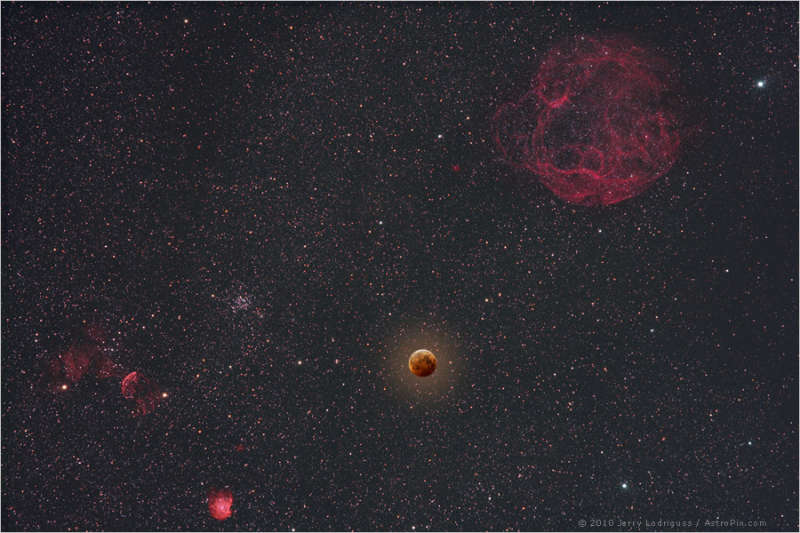 |
Астронет: Астрономическая картинка дня Лунное затмение в день солнцестояния http://variable-stars.ru/db/msg/1248777/eng |
Credit & Copyright: Jerry Lodriguss
(Catching the Light)
Explanation:
Sometime after sunset tonight, the Moon will go dark.
This total lunar eclipse, where the entire Moon is engulfed in the shadow of
the Earth, will be visible from all of
North America, while the partial phase of this eclipse will be visible throughout
much of the rest of the world.
Observers on North America's east coast will have to wait until after midnight
for totality to begin, while west coasters should be able to see a fully
darkened moon
before midnight.
Pictured above is a digital prediction, in image form, for how the
Moon and the surrounding sky could appear near maximum darkness.
Rolling your cursor over the image will bring up labels.
Parts of the Moon entering the circle labeled
umbra will appear the darkest since the Sun there will
be completely blocked by the Earth.
Parts of the Moon entering the circle labeled
penumbra will be exposed to some direct sunlight, and
so shine by some degree by reflected light.
The diminished glare of the normally full Moon will allow unusually good viewings
of nearby celestial wonders such as the supernova remnant
Simeis 147, the open star cluster
M35, and the Crab Nebula
M1.
By coincidence this eclipse occurs on the day with the shortest amount of daylight
in the northern hemisphere -- the Winter Solstice.
This solstice eclipse is the first in 456 years, although so far it appears
that no one has
figured out when the next solstice eclipse will be.
Authors & editors:
Robert Nemiroff
(MTU) &
Jerry Bonnell
(USRA)
NASA Web Site Statements, Warnings,
and Disclaimers
NASA Official: Jay Norris.
Specific
rights apply.
A service of:
LHEA at
NASA /
GSFC
& Michigan Tech. U.
